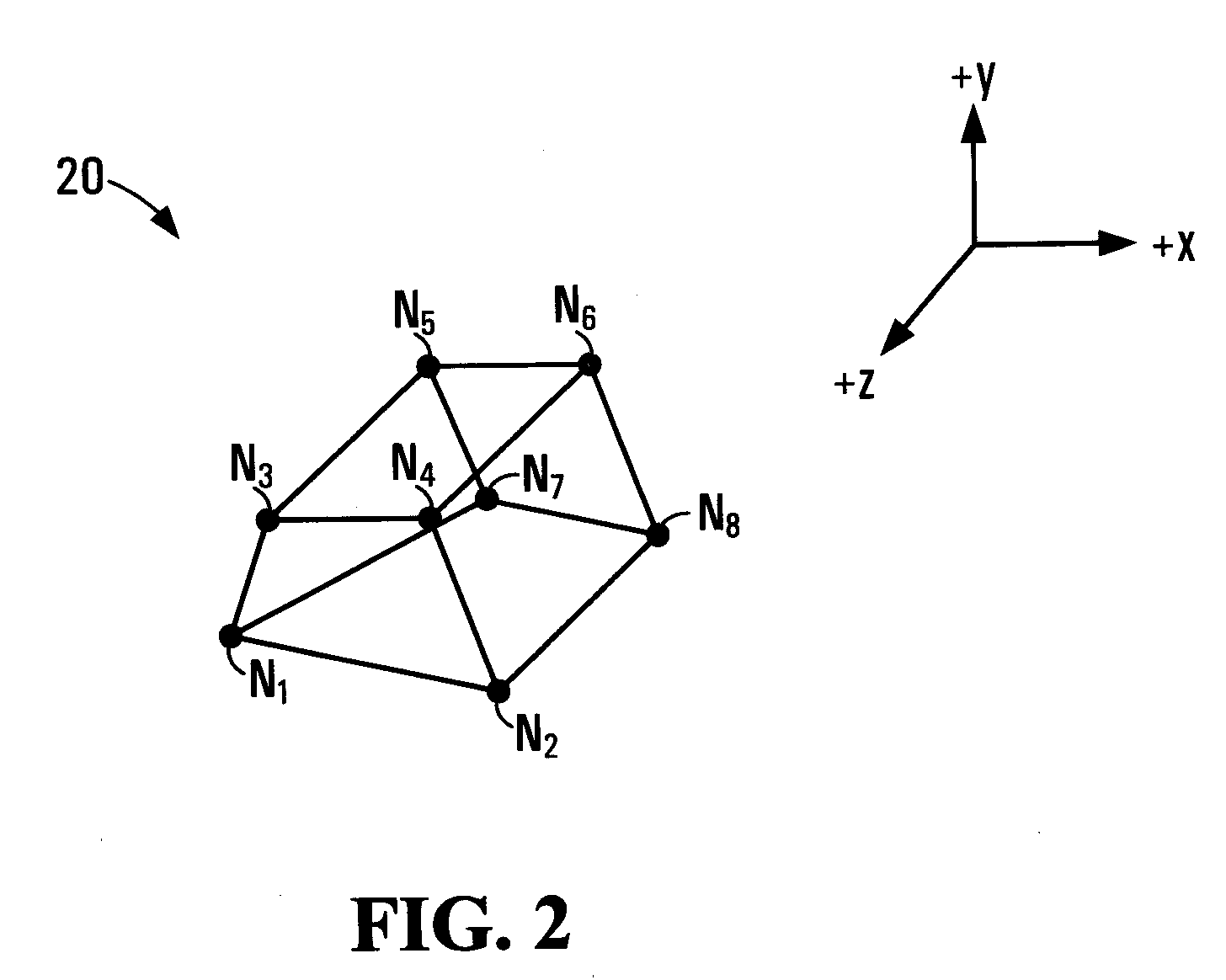Method and system for modelling petroleum migration
a technology of petroleum migration and method, applied in the field of method and system for modeling petroleum migration, can solve the problems of crude model when compared to the real world, affecting the quality of oil and gas flow, and incorporating considerable inherent uncertainties, etc., and limiting their application and quality.
- Summary
- Abstract
- Description
- Claims
- Application Information
AI Technical Summary
Benefits of technology
Problems solved by technology
Method used
Image
Examples
Embodiment Construction
[0023]FIG. 1 is a perspective view of a three-dimensional orthogonal grid 10 used to model subsurface structures in accordance with a conventional modelling technique. The use of a three-dimensional grid such as grid 10 is well known in the art of migration modelling. Grid 10 is made up of cells C1, C2 and C3, though a typical grid used in prior art systems would be made up of hundreds if not millions of such cells. Each one of cells C1, C2 and C3 is made up of one or more cell faces, some of which are hidden from view.
[0024]To accurately predict the flow of reactants, a model is built by imposing a grid such as grid 10 on to the petroleum system to facilitate the solution of flow equations by calculating the likelihood of reactant flow between the cells. The goal is to assemble a grid which represents a three-dimensional model of the petroleum system.
[0025]Variables are calculated for each cell which can include one or more of length, width, thickness, porosity, capillary threshold...
PUM
 Login to View More
Login to View More Abstract
Description
Claims
Application Information
 Login to View More
Login to View More - R&D
- Intellectual Property
- Life Sciences
- Materials
- Tech Scout
- Unparalleled Data Quality
- Higher Quality Content
- 60% Fewer Hallucinations
Browse by: Latest US Patents, China's latest patents, Technical Efficacy Thesaurus, Application Domain, Technology Topic, Popular Technical Reports.
© 2025 PatSnap. All rights reserved.Legal|Privacy policy|Modern Slavery Act Transparency Statement|Sitemap|About US| Contact US: help@patsnap.com



